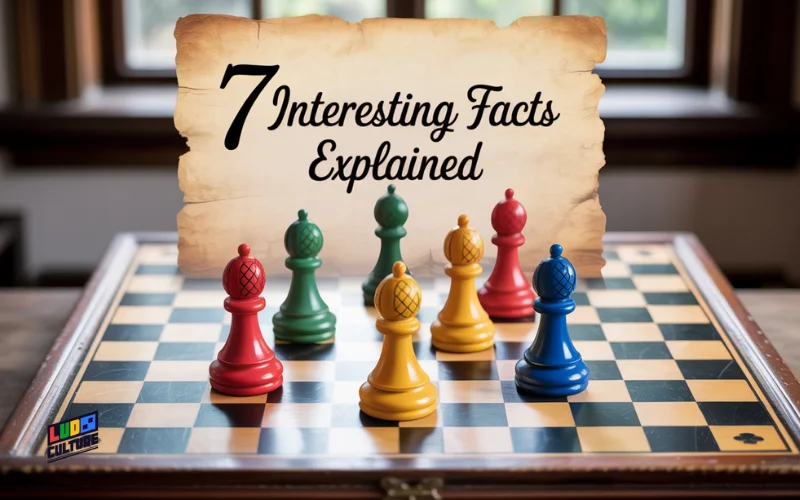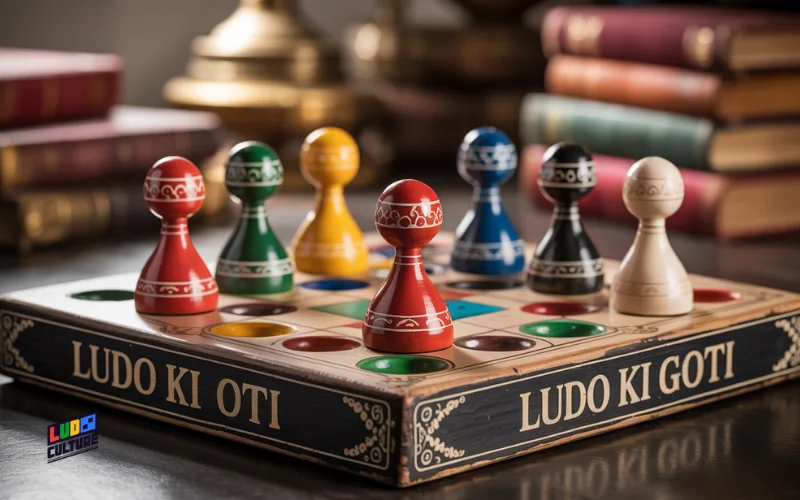
Ludo Ki Goti in English 7 Interesting Facts Explained
Ludo is one of the most popular board games played across the world. In India, the game has a special place in households, and many people know the pieces as goti. When players look for ludo ki goti in english, they are usually curious about what the small pawns or tokens are called outside of India. The word goti directly translates to pawn, token ludo board game rules, or piece in English, but its meaning goes beyond just the name. These small playing parts carry history, strategy, and cultural value. In this article, we will explore ludo ki goti in english in detail and explain 7 interesting facts that make them special.
Understanding Ludo Ki Goti in English
The term ludo ki goti in english can be explained as ludo tokens or ludo pieces. Each player gets four tokens of the same color, usually red, blue, green, and yellow. These gotis move around the board based on dice rolls, aiming to reach the finishing square at the center. While the English word is token, many Indian players still use the word goti because of its cultural familiarity. The tokens symbolize progress, competition, and strategy in the game of ludo.
Fact 1 The Origin of Ludo Ki Goti in English
Ludo originated from the ancient Indian game Pachisi, which was played centuries ago. In Pachisi, the playing pieces were small shells, seeds, or carved stones. When the game evolved into ludo during the British colonial period, the gotis were redesigned into small plastic or wooden pawns. In English, these pawns became known as tokens or pieces. This change shows how ludo ki goti in english represents both tradition and modernization.
Fact 2 Ludo Ki Goti in English Are Called Tokens
When you translate ludo ki goti in english, the correct term is ludo token. Tokens are small objects that represent a player’s position on the board. Unlike chess, where pawns and knights have unique moves, all ludo tokens move in the same way. The dice controls how far they can go, and strategy decides which goti should move at the right time. Calling them tokens makes it easier for global players to understand, but the Indian term goti still carries emotional value.
Fact 3 Different Materials Used for Ludo Ki Goti
Over the years, ludo ki goti in english or tokens have been made from different materials. Traditional households used wooden pieces with hand painted colors. Later, plastic became the most common material for mass produced ludo boards. In luxury editions, glass, stone, or even metal tokens are used. The choice of material does not change the rules, but it adds beauty and uniqueness to the board. The diversity of materials shows how ludo tokens have adapted to modern design while keeping their cultural identity.
Fact 4 Symbolism of Colors in Ludo Ki Goti in English
Each set of ludo ki goti in english comes in four different colors. Traditionally, red, green, yellow, and blue are the main colors. In many cultures, these colors symbolize strength, growth, energy, and calmness. Players often have personal favorites and believe some colors bring better luck. In tournaments, the colors are simply identifiers, but in casual family games, the choice of color often reflects personality. This small detail makes ludo tokens more than just playing pieces.
Fact 5 The Role of Strategy with Ludo Ki Goti in English
Many people think ludo is a game of luck, but ludo ki goti in english also involve strategy. Each player decides which token to move after a dice roll. Sometimes it is safer to keep a goti in the home area, while other times it is necessary to push forward and capture opponents. The balance between attacking and defending makes the game interesting. Using tokens wisely is what separates a casual player from an expert.
Fact 6 Ludo Ki Goti in Digital Versions
With the rise of mobile gaming, ludo ki goti in english have entered the digital world. Online ludo apps show virtual tokens moving around the screen. Instead of physical plastic pieces, players see animated tokens with attractive colors and effects. Some apps even allow customization, where players can choose unique designs for their tokens. The digital transformation has made ludo more accessible, but the essence of moving gotis on the board remains the same.
Fact 7 Cultural Impact of Ludo Ki Goti in English
The importance of ludo ki goti in english goes beyond gaming. For many families, these tokens bring people together during holidays, gatherings, and casual evenings. They symbolize childhood memories and togetherness. In India, ludo is often seen as a family bonding activity, while in other parts of the world, tokens are simply part of a board game. This cultural difference makes the word goti more meaningful than its English translation.
Ludo Ki Goti in English in Modern Lifestyle
Today, ludo is not just a game played on wooden or plastic boards. It is a symbol of fun across generations. Children, adults, and even grandparents enjoy moving tokens around the board. The word ludo ki goti in english might seem simple, but it represents a bridge between traditional Indian gaming culture and the global world of board games. Whether you call them gotis or tokens, they remain an important part of ludo’s charm.
Conclusion
The journey of ludo ki goti in english shows how a small playing piece can carry history, strategy, and cultural meaning. From wooden shells in ancient Pachisi to digital tokens in mobile apps, these pieces have evolved while keeping the essence of the game alive. Understanding their importance helps us appreciate ludo not just as a board game but as a cultural treasure. The seven facts explained here highlight the origin, translation, materials, colors, strategy, digital transformation, and cultural impact of ludo tokens. Next time you play ludo, whether on a physical board or a mobile app, remember that each goti or token is more than just a piece. It is a part of history, tradition, and shared joy across the world.

